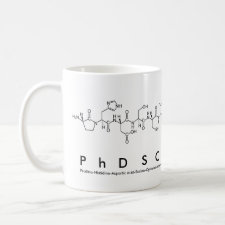
Authors: Li D, Gao BJ, Xu WM
Article Title: Realizing molecular recognition and high efficient Preparation for enantiomers of Chiral Drugs by constituting Chiral caves with Novel Surface-Molecular Imprinting Technique.
Publication date: 2011
Journal: Acta Chimica Sinica
Volume: 69
Issue: (24)
Page numbers: 3019-3027.
Alternative URL: http://sioc-journal.cn/Jwk_hxxb/EN/abstract/abstract340870.shtml
Abstract: Via the coupling effect of γ-aminopropyltrimethoxysilane, methacrylic acid was graft-polymerized onto the surface of silica gel particles, obtaining the grafted particles PMAA/SiO2. Then, the molecular imprinting towards the grafted PMAA was performed with one enantiomer of tetramisole (TM), L-TM, as template molecule and ethylene glycol diglycidyl ether (EGDE) as crosslinking agent by using the novel surface-molecular imprinting technique established by our research group, and the L-TM molecule-imprinted material MIP-PMAA/SiO2 was prepared. With another enantiomer, D-TM, as a contrast compound, both static and dynamic methods were adopted to study the chiral recognition character and binding property of MIP-PMAA/SiO2 for L-TM and to examine its ability to separate the two enantiomers in racemate. The experiment results show that MIP-PMAA/SiO2 have specific recognition selectivity and excellent binding affinity for L-TM, and its selectivity coefficient for L-TM with respect to D-TM reaches 4.03, displaying fine ability to separate the two enantiomers. Besides, MIP-PMAA/SiO2 has excellent elution property, and with a diluted aqueous solution of NaOH as the eluent, the desorption ratio of L-TM reaches 99.08% in 20 BV.
Template and target information: tetramisole, TM
Author keywords: Polymethacrylic acid, silica gel, Surface-molecular imprinting, Molecule recognition, tetramisole, chiral separation



Join the Society for Molecular Imprinting

New items RSS feed
Sign-up for e-mail updates:
Choose between receiving an occasional newsletter or more frequent e-mail alerts.
Click here to go to the sign-up page.
Is your name elemental or peptidic? Enter your name and find out by clicking either of the buttons below!
Other products you may like:
 MIPdatabase
MIPdatabase









